
|
|
|
|
|
|
2019-2020
The 5G standard is released
From 2019 to 2020, the next major cellular wireless standard is rolled out, providing vastly improved data transfer rates. The 5G family of standards is a major leap from previous generations in terms of power and connectivity.
While 4G bandwidth was typically measured in tens of megabits per second, with peak speeds of around 100Mbps, the new 5G networks achieve an order of magnitude improvement – several hundred megabits per second in real-world, less-than-ideal conditions, with peaks of multi-gigabits per second. Streaming of 4K and even higher resolutions, along with near-instant downloads of high-definition videos and other large files, becomes the norm.
A key advantage of 5G is Ultra Reliable Low Latency Communications (URLLC) – i.e. reduced time to pass a message from sender to receiver – barely a millisecond of delay compared to approximately 70 ms on 4G networks. This is especially useful in multiplayer mobile gaming, factory robots, remote surgery (a.k.a. telesurgery), self-driving cars and other tasks demanding an instant response.
Another key feature is pervasive networks, which mean that a 5G user can be simultaneously connected to several wireless access technologies and seamlessly move between them, whether they are connected to 2.5G, 3G, 4G or 5G, Wi-Fi, WPAN or any other contemporary access technology. Multiple, concurrent data transfer paths are easily handled. Meanwhile, high-altitude stratospheric platform station (HAPS) systems using 5G can deliver high-speed Internet services to very large geographical areas.
5G is among the most significant technologies of the early 21st century. It marks the true birth of the Internet of Things (IoT), triggering an unprecedented explosion of "smart" devices with multi-trillion-dollar impacts. It ensures one unified global standard with full compatibility, no matter what brand or model.
The first phase is completed by March 2019, to accommodate early commercial deployment for approximately 20 operators around the world, including all major U.S. carriers. The second phase is completed by March 2020. The 5G standard is followed by 6G in the 2030s, offering terabit speeds.
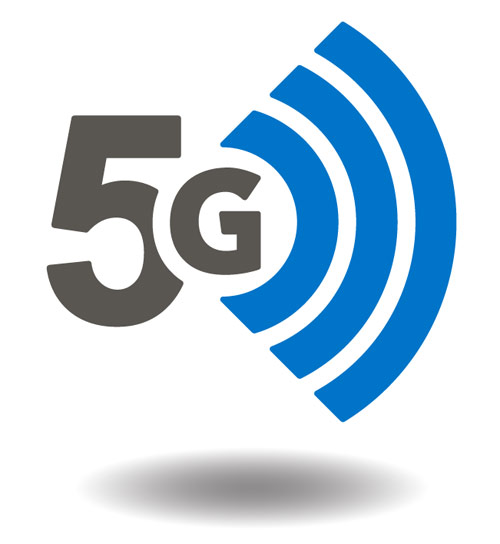
2019
The New Horizons probe arrives at Kuiper Belt Object 2014 MU69
After visiting Pluto and its moons in 2015, NASA's New Horizons probe began heading towards the Kuiper Belt – a remote ring of icy debris that surrounds our Solar System. The spacecraft performed a series of four manoeuvres in October and November 2015. These propulsions were the most distant trajectory correction ever performed by any space probe. New Horizons was now on course for a rendezvous with 2014 MU69, a Kuiper Belt object located a billion miles beyond Pluto.
2014 MU69 was discovered in June 2014 by the Hubble Space Telescope. Based on its brightness and distance, it was estimated to have a diameter of 30–45 km (20–30 mi), with an orbital period of 293 years, low inclination and low eccentricity. This unexcited orbit meant that it was a cold classical Kuiper Belt Object, unlikely to have undergone significant perturbations. Further observations in May and July 2015 greatly reduced the uncertainties in the orbit, making it a suitable target for New Horizons.
The probe finally reached this object – nicknamed Ultima Thule – on 1st January 2019.* At 6.5 billion km from Earth, it was the most distant body to ever be encountered by a spacecraft. The close flyby revealed it to be slightly smaller than expected, with a striking and highly unusual "snowman" shape consisting of a top and bottom section fused together and a light reddish-brown colour.
New Horizons returned high-priority data and initial low-resolution images within hours of this rendezvous. At such a vast distance, however, the data rate was only 1–2 kilobits per second and the full download at higher resolution would take 20 months. The probe continues to study this region until 2022.*

US copyright begins to expire, starting with all works from 1923
Up until 1998, US copyright law stood with all works published before 1923 in the public domain, all works between 1923 and 1977 holding a copyright for 75 years (assuming a renewal was made) and works published after 1977 holding a copyright dependent on the author's date of death.
However, the Copyright Term Extension Act of 1998 made several revisions to the law. While all works published prior to 1923 remained in the public domain, all works published between 1923 and 1977 had their copyrights extended to 95 years after their creation. According to this law, the copyright of the first year of materials, 1923, will expire in 2019, assuming they did not have their copyright renewed. In 2020, all works from 1924 will enter the public domain, and so on.**
Examples of works now entering the public domain this year include the Pulitzer Prize-winning collection of poems, New Hampshire, by Robert Frost; the Noël Coward play, The Young Idea; and the film, The Ten Commandments, directed by Cecil B. DeMille.

Jair Bolsonaro becomes President of Brazil
From mid-2014 to 2016, Brazil experienced a severe economic crisis. This became coupled with a political crisis that resulted in the impeachment of President Dilma Rousseff and in widespread dissatisfaction with the political system. In 2015, Brazil's gross domestic product (GDP) dropped by 3.9% due to falling wages, restrictions on credit and a rise in the basic interest rate. In 2016, it fell again, by 3.6%, with reductions across all sectors of the economy. This was the first time since 1931 that Brazil's GDP had fallen in two consecutive years.
In 2017, a 1% rise in GDP for the first quarter of the year was reported; the first rise after eight consecutive falls over the previous two years. Minister of Finance Henrique Meirelles stated that the country had exited the "greatest recession of the century". However, economists warned that this growth characterised only the end of the "technical recession" and that it was still too early to declare the crisis over, given that unemployment remained high and much uncertainty persisted regarding the future of the country, especially in the aftermath of Brazil's political scandals.
General elections were held in Brazil on 7th October 2018 to elect a new President, Vice President and the National Congress. Elections for state governors and vice governors, state legislative assemblies and the Legislative Chamber of the Federal District were also held. Jair Bolsonaro, Rio de Janeiro congressman and former army captain, won the first round of the presidential vote. On 28th October 2018, a run-off between him and Fernando Haddad, former São Paulo mayor, took place. With 55.1% of the popular vote, Bolsonaro was declared the winner.
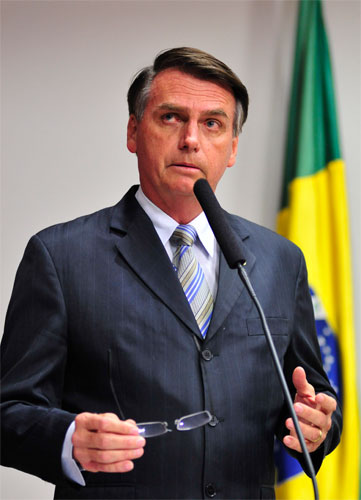
Gustavo Lima / Câmara dos Deputados [CC BY 3.0],
via Wikimedia Commons
A polarising and controversial politician, Bolsonaro's views and comments – described as far-right and extremely conservative in nature – had drawn both praise and criticism. On 6th September 2018, while campaigning in the southeast of Brazil, he survived an assassination attempt when a 40-year-old man stabbed him, causing major blood loss. Later that month, hundreds of thousands of people across Brazil staged protests against Bolsonaro's candidacy.
Throughout his political career, Bolsonaro had expressed his admiration for Brazil's military dictatorship, which ruled from 1964 to 1985, describing it as a "glorious" period in the country's history. He also repeatedly praised other Latin American dictatorships.
Bolsonaro vowed to improve relations between the United States and Brazil, praising Donald Trump and his foreign policy. Regarding the State of Palestine (recognised by 137 U.N. members), he stated it was "not a country, so there should be no embassy here", adding "You don't negotiate with terrorists." Bolsonaro's son Eduardo indicated that Brazil should distance itself from Iran, sever ties with Nicolás Maduro's government in Venezuela and relocate Brazil's embassy in Israel to Jerusalem.
Bolsonaro frequently provoked outrage for what many viewed as racist, homophobic and misogynistic remarks. In 2015, he argued that men and women should not receive equal salaries, because women get pregnant, adding that he believed the mandating of paid maternity leave harmed work productivity. During a public speech in 2017, he said that his first four children were male, but the fifth he produced was a daughter out of "a moment of weakness". Bolsonaro also stated that "I would be incapable of loving a gay son", adding that he would prefer any gay son of his "to die in an accident". He was described by The Advocate, an LGBT magazine, as "Brazil's biggest homophobe".
Bolsonaro's election victory was seen as a crushing blow for the environment. He pledged to dramatically expand the available land for agriculture, energy, mining and other activities in the Amazon, as well as the vast and biologically rich savannas to the south. He promised to ban international NGOs such as Greenpeace and WWF from the country. He also came out strongly against lands reserved for indigenous tribes. Under his policies, from 2021 to 2030, accumulated emissions from clear-cutting the world's biggest rainforest would attain 13.12 gigatons of carbon dioxide equivalent (GtCO2e), making it all but impossible for Brazil to fulfil its commitments to the Paris Agreement. This quadrupling of deforestation would represent 20% of the "free" carbon budget remaining to achieve the 1.5° Celsius IPCC goal.
Shortly before his inauguration, reports emerged on social media that more than 20 universities in Brazil had been subjected to invasions by military police, confiscation of teaching materials on ideological grounds, and the suppression of freedom of speech and expression – especially in relation to anti-fascist history and activism.
These controversies would continue throughout his presidency. Bolsonaro's four-year term began on 1st January 2019.
The first soft landing on the far side of the Moon
On 3rd January 2019, China made the first soft landing on the far side of the Moon with its Chang'e 4 probe. Named after the Chinese Moon goddess, Chang'e, this was a follow-up to Chang'e 3, a landing on the Moon's near side that occurred in December 2013. The landing site of Chang'e 4 was within a large crater called Von Kármán, about 180 km (110 mi) in diameter, in the South Pole-Aitken Basin.
Like its predecessor, Chang'e 4 included a small rover with science instruments – a panoramic camera (PCAM), lunar ground-penetrating radar (LPR), visible and near-infrared imaging spectrometer (VNIS) and Advanced Small Analyser for Neutrals (ASAN). The VNIS would be used for identification of surface materials and atmospheric trace gases, while the ASAN would study the effects of solar wind and the process behind the formation of water. The rover's nominal operating time was three months, but after the experience with Chang'e 3 in 2013, the design was improved and Chinese engineers were hopeful it could last for "a few years".
The lander also carried a 3 kg (6.6 lb) sealed "biosphere" with seeds and insect eggs to test whether flora and fauna could hatch and grow together in synergy on the lunar surface. The experiment included seeds of potatoes and Arabidopsis thaliana, as well as silkworm eggs. Environmental systems would keep the container hospitable and Earth-like, except for the low lunar gravity, with a miniature camera to monitor any growth.
Chang'e 4 would be followed by additional Chang'e 5 and Chang'e 6 probes, aiming to collect at least 2 kg (4.4 lb) of lunar soil and rock samples and return them back to Earth, the first such effort since Russia's Luna 24 in 1976. These missions were intended to pave the way for a Chinese crewed landing.
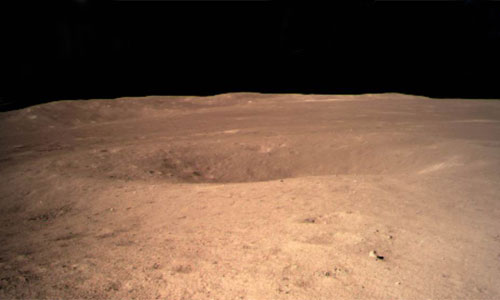
Credit: China National Space Administration (CNSA)
The Emperor of Japan abdicates
On 30th April 2019, Emperor Akihito of Japan abdicates his position, due to old age (85) and declining health. He is the first Japanese monarch to do so in over two centuries. This marks the end of the Heisei period (1989–2019) and precipitates numerous festivities leading up to the accession of his successor, the Crown Prince Naruhito. Akihito's younger son, Prince Akishino, becomes his brother's heir presumptive.
Official farewell celebrations begin with a 30th Jubilee ceremony on 12th February. This is followed by a special ten-day block of Golden Week holidays lasting from 27th April to 6th May. The Enthronement Ceremony takes place on 22nd October, marking the end of the transition period, which is an extra public holiday. An abdication within the Japanese Imperial Family had not occurred since Emperor Kōkaku in 1817.

Europe's Galileo satellite navigation system is fully operational
Galileo is a global navigation satellite system (GNSS) built by the European Union (EU) and European Space Agency (ESA). The €5 billion project is named after the Italian astronomer Galileo Galilei. One of the aims of Galileo is to provide a high-precision positioning system upon which European nations can rely, independently from the Russian GLONASS, American GPS, and Chinese Compass systems, which can be disabled in times of war or political conflict.
When in operation, it uses two ground operation centres near Munich, Germany and in Fucino, Italy. In 2010, Prague in the Czech Republic was voted by EU ministers as the headquarters for the project. In 2011, the first two of four operational satellites were launched to validate the system. The next two followed in 2012, making it possible to test Galileo "end-to-end". Once this In-Orbit Validation (IOV) phase was completed, more satellites were launched, reaching Initial Operational Capability (IOC) in the middle of the decade. Full completion of the 30 satellites in the Galileo system (27 operational + 3 active spares) is achieved in 2019.* Europe now has its own independent satellite navigation capability.*
In addition to basic navigation services free of charge (giving horizontal and vertical measurements accurate to within 1 metre), Galileo provides a unique global Search and Rescue (SAR) function. Satellites can relay distress signals from a user's transmitter to the Rescue Coordination Centre, which then initiates a rescue operation. At the same time, the system provides a signal to the user, informing them that their situation has been detected and that help is on the way. This latter feature is a major upgrade compared to the existing GPS and GLONASS systems, which do not provide feedback to the user. The use of basic (low-precision) Galileo services is free and open to everyone. High-precision capabilities are available for paying commercial users and for military use.
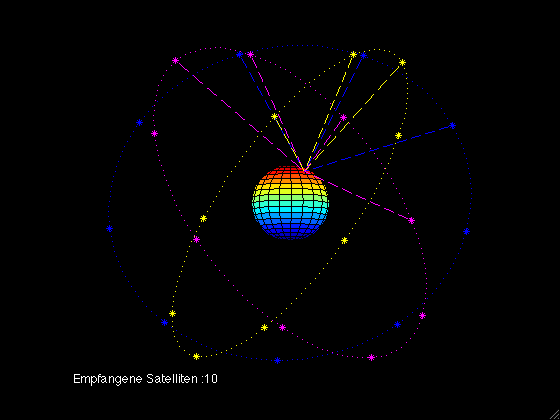
Credit: Lukas Rohrt
Connected vehicle technology is being deployed in a number of countries
Many of the world's cars are already linked to the Internet in some way. By 2019, another layer of technology is being added in the form of wireless connections between vehicles.* Using a combination of Wi-Fi and GPS signals, they are now able to alert drivers to potential hazards or obstructions. For example, if a car two vehicles ahead of the driver brakes, but the car immediately in front does not, this technology warns him/her with a loud beep and flashing red lights on the windshield to hit the brakes.
By communicating with each other and the roadway infrastructure, cars now have greatly improved safety, while traffic congestion and carbon emissions are reduced. In fact, the system is so effective that in some countries, accident fatalities drop by 80%.* It soon becomes mandatory, due to the obvious economic and safety benefits. This technology had already begun to appear on trucks, a few years earlier. Now passenger cars are using it too.

Automated freight transport
Autonomous rapid transit has already been in place at certain airports and on city metro systems. By 2019, it has begun spreading to public roads, with a number of driverless trucks appearing.* These are capable of travelling hundreds of miles, negotiating traffic and obstacles using advanced GPS, lidar and other technologies. They have a number of advantages over human drivers – such as being able to operate for 24 hours a day without getting tired, never being absent, and not requiring a salary or training. These become increasingly widespread in the 2020s and 2030s.
LEDs dominate the lighting industry
Light-emitting diode (LED) lamps are 20 times more efficient and over 100 times longer lasting than incandescent bulbs. LEDs were first demonstrated in the early 1960s, but were low-powered and only emitted light in the low, red frequencies of the spectrum. For many years, they were used as indicators such as red standby dots on TVs.
The first high-brightness blue LED was achieved in 1994 (an invention that earned the researchers a Nobel Prize in October 2014*). The existence of blue LEDs and high-efficiency LEDs quickly led to the development of the first white LED, which employed a phosphor coating to mix down-converted yellow light with blue to produce light that appeared white. As the technology developed further and the lamps became brighter, LEDs found new roles in a wide range of home, business and other applications.
Governments around the world began passing measures to phase out incandescent light bulbs for general lighting in favour of more energy-efficient alternatives.* These regulations effectively banned the manufacture, importation or sale of traditional filament bulbs – first in Brazil and Venezuela (2005), then most of Europe (2009), Australia (2009), Argentina (2012), Canada (2012), Russia (2012) and the United States (2012). Other countries would follow later in the decade, including China.*
By the early 2010s, many cities were recognising the benefits of LED lighting for streets and public areas. In particular, social housing communal areas could be made to feel safer and more secure,** while delivering huge energy savings in the long term (90%) and reducing the need for maintenance. Buildings that once appeared dim and foreboding at night were now illuminated with fresher, brighter light more closely resembling daylight. In addition, light pollution could be reduced with innovations in the way light was focussed, preventing it from overlapping or flooding areas it was not needed.*
Among the early adopters were Los Angeles – which completed a massive retrofit in 2012 – and New York which replaced all 250,000 of its street lights with LEDs by 2017.* The market share of LEDs continued to increase rapidly, as prices tumbled and public awareness grew. By the end of this decade, they comprise a clear majority of total sales in the lighting industry.* Regulations on mercury begin to limit the sale of fluorescent lamps from 2020,* boosting the uptake of LEDs even further in the years ahead.*

The City Circle Line opens in Copenhagen
Copenhagen's Metro was first opened in 2002. Back then, only two lines were operational – running from Vanløse to Vestamager and Lergravsparken. The next phase commenced in 2007, with an extension of the existing line to Copenhagen Airport. This meant that journeys from the city centre of Copenhagen to the airport could be achieved in just 14 minutes. The fourth phase of the Metro is called Cityringen, or the City Circle Line. This route is a substantial upgrade, with 17 new stations covering major parts of the city centre as well as the Østerbro, Nørrebro, and Vesterbro districts and the Municipality of Frederiksberg previously not covered by the S-train or Metro line service. It takes approximately 24 minutes to travel all the way around the circle line. Originally planned for 2018, it is delayed by a year, opening in 2019.*
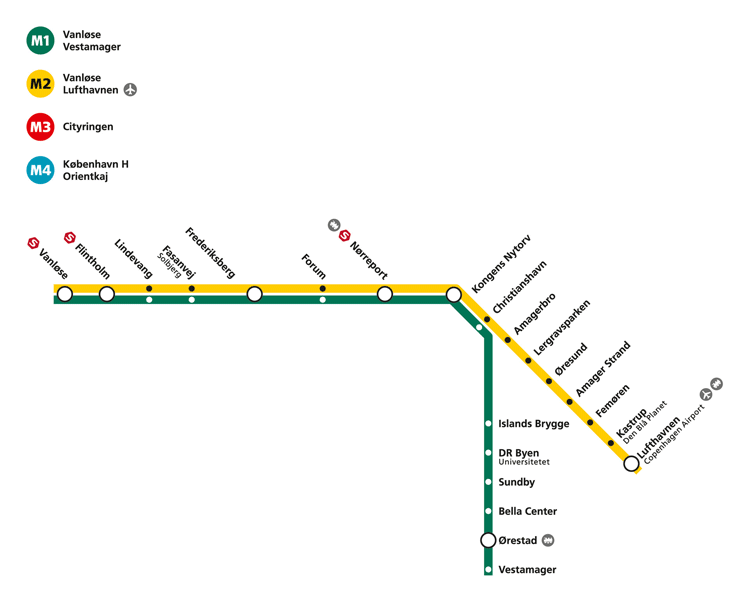
The CHEOPS telescope is deployed to study exoplanets
In late 2019, the European Space Agency (ESA) launches a new satellite to hunt for exoplanets. Its focus of study is nearby star systems already known to host Earth-to-Neptune size planets. The small CHaracterising ExOPlanets Satellite (CHEOPS) operates in a Sun-synchronous low-Earth orbit at 435 miles (700 km) altitude and has a mission lifetime of 3.5 years. It is powerful and precise enough to form accurate measurements of a planet's radius, as well as determining the likely density and internal structure. The mission provides unique targets for more detailed follow-up studies by the next generation of telescopes such as the ground-based European Extremely Large Telescope and the James Webb Space Telescope. Originally planned for launch in 2017, CHEOPS was delayed until the end of 2018, then delayed yet again until late 2019.*
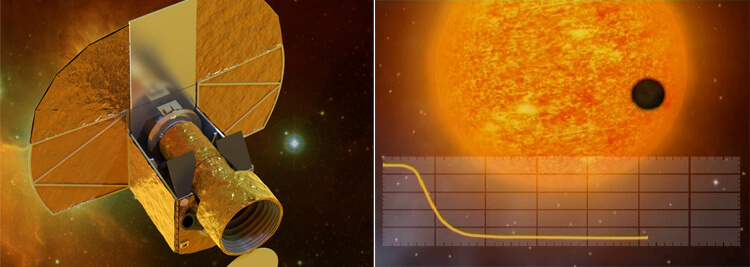
Credit: University of Bern/CERN
« 2018 |
⇡ Back to top ⇡ |
2020 » |
If you enjoy our content, please consider sharing it:
References
1 (486958) 2014 MU69, Wikipedia:
https://en.wikipedia.org/wiki/(486958)_2014_MU69
Accessed 3rd January 2019.
2 See 2022.
3 Welcome to the Public Domain, Stanford University:
http://fairuse.stanford.edu/Copyright_and_Fair_Use_Overview/chapter8/8-a.html
Accessed 21st October 2011.
4 Copyright Duration,Stanford University:
http://www.salisbury.edu/library/copyright/copyrightduration.html
Accessed 21st October 2011.
5 Galileo: October take off for EU satellites, The European Commission:
http://europa.eu/rapid/press-release_IP-11-627_en.htm?locale=en
Accessed 3rd January 2018.
6 What is Galileo?, ESA:
http://www.esa.int/esaNA/galileo.html
Accessed 15th October 2012.
7 "If the government makes a decision to go the regulation route, you could see this technology on vehicles by 2019 or 2020."
See Ford unveils "talking" cars, WDRB:
http://www.wdrb.com/story/15659548/fords-talking-cars
Accessed 13th October 2011.
8 "The US DOT estimates that these technologies have the potential to reduce accident fatalities by a staggering 81 percent in all unimpaired driver related crashes."
See World Congress live demonstrations announced, ERTICO:
http://erticonetwork.com/world-congress-live-demonstrations-announced/
Accessed 3rd January 2018.
9 The robot revolution: Driverless trucks and voice-activated pets could
be commonplace by 2019, DailyMail.co.uk:
http://www.dailymail.co.uk/sciencetech/article-1207784/The-robot-revolution-Driverless-trucks-voice-activated-pets-commonplace-2019.html
Accessed 20th August 2009.
10 American and 2 Japanese Physicists Share Nobel for Work on LED Lights, The New York Times:
http://www.nytimes.com/2014/10/08/science/isamu-akasaki-hiroshi-amano-and-shuji-nakamura-awarded-the-nobel-prize-in-physics.html
Accessed 26th October 2014.
11 Phase-out of incandescent light bulbs, Wikipedia:
https://en.wikipedia.org/wiki/Phase-out_of_incandescent_light_bulbs
Accessed 26th October 2014.
12 A Systematic Approach to Solid State Lighting, Design World:
http://www.designworldonline.com/a-systematic-approach-to-solid-state-lighting/
Accessed 26th October 2014.
13 LEDs offer brighter future for social housing, Energy Saving Trust:
http://www.energysavingtrust.org.uk/Energy-Saving-Trust/Press/Archived-press-releases/LEDs-offer-brighter-future-for-social-housing
Accessed 26th October 2014.
14 Lit up: an LED lighting field trial, Energy Saving Trust:
http://www.energysavingtrust.org.uk/Publications2/Energy-efficiency/Lit-up-an-LED-lighting-field-trial
Accessed 26th October 2014.
15 New LED streetlight design curbs light pollution, Future Timeline Blog:
https://www.futuretimeline.net/blog/2013/04/26.htm
Accessed 26th October 2014.
16 By 2017, New York City aims to have replaced all of its street lights with LEDs,Future Timeline Blog:
https://www.futuretimeline.net/blog/2013/10/26.htm
Accessed 26th October 2014.
17 There are varying future estimates, some of which are listed here. All show that LEDs will form a clear majority of lighting sales before the decade is out:
53% by 2019 and 61% by 2020:
Estimated LED penetration of the global lighting market from 2010 to 2020, Statista:
http://www.statista.com/statistics/246030/estimated-led-penetration-of-the-global-lighting-market/60% by 2020:
Lighting market report predicts strong growth for LED lighting (MAGAZINE), LEDs Magazine:
http://www.ledsmagazine.com/articles/print/volume-8/issue-9/features/lighting-market-report-predicts-strong-growth-for-led-lighting-magazine.html64% by 2020:
By 2017, New York City aims to have replaced all of its street lights with LEDs, Future Timeline Blog:
https://www.futuretimeline.net/blog/2013/10/26.htm69% by 2020:
The Low Carbon Economy - GS SUSTAIN equity investor's guide to a low carbon world, 2015-25, Goldman Sachs:
http://www.qualenergia.it/sites/default/files/articolo-doc/report.pdf70% by 2020:
GE Lighting Sees Brighter Future With LED Growth, Forbes:
http://www.forbes.com/sites/greatspeculations/2013/06/11/ge-lighting-sees-brighter-future-with-led-growth/82% by 2020:
LED 'to hit 82% market share' by 2020, Lux Review:
http://luxreview.com/article/2014/08/led-to-hit-82-market-share-by-2020
Accessed 26th October 2014.
18 See 2020.
19 LED Lighting Market to Grow Over 12-Fold to $25 Billion in 2023, Yahoo! Finance:
http://www.finance.yahoo.com/news/led-lighting-market-grow-over-123000345.html
Accessed 26th October 2014.
20 "Cityringen consists of 17 new stations in central Copenhagen and will be completed in 2019."
See Cityringen – official web page:
http://intl.m.dk/#!/about+the+metro/cityringen/about
Accessed 4th March 2015.
21 "The Characterising Exoplanet Satellite, CHEOPS, will target 15 October to 14 November 2019 for launch."
See Exoplanet mission launch slot announced, ESA:
http://sci.esa.int/cheops/60949-exoplanet-mission-launch-slot-announced/
Accessed 2nd January 2019.
![[+]](https://www.futuretimeline.net/images/buttons/expand-symbol.gif)







